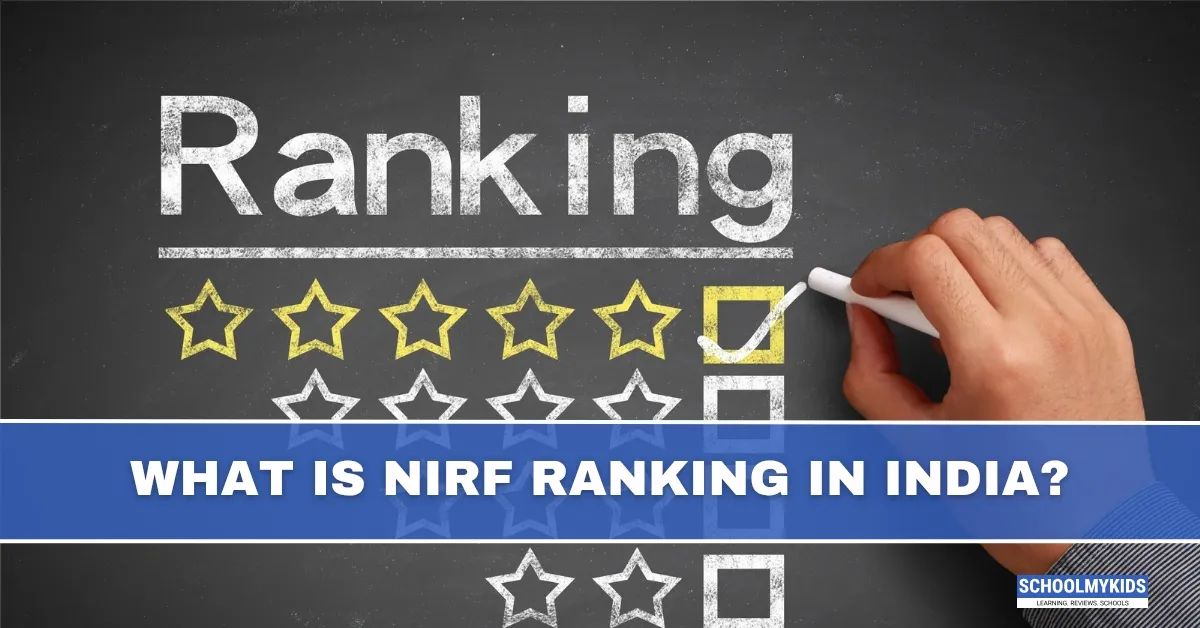The National Institutional Ranking Framework (NIRF) is a pioneering initiative by the Ministry of Education, Government of India, aimed at evaluating and ranking higher educational institutions in India. Introduced in 2015, NIRF seeks to establish a credible, transparent, and robust system to measure the performance of universities and colleges across various domains. It provides a framework for institutions to self-evaluate and benchmark themselves against national standards, helping students, parents, educators, and policymakers make informed decisions.
Background and Evolution
Before NIRF, India lacked an official, unified national system to rank its institutions. Most rankings were international and often did not reflect the regional realities or challenges specific to Indian education. Recognizing this gap, the National Institutional Ranking Framework was launched by the Ministry of Human Resource Development (now Ministry of Education) on 29th September 2015. The first set of rankings was released in April 2016.
Since then, NIRF has expanded its scope and methodology, becoming the most respected national ranking system for Indian higher education.
Objectives of NIRF
- To provide a transparent ranking system based on objective, verifiable criteria.
- To foster competitiveness among institutions, encouraging continuous improvement in quality and performance.
- To assist students and parents in making informed decisions about higher education.
- To support national education planning, research funding, and policy formulation.
- To align with the goals of the National Education Policy (NEP) 2020, particularly in terms of transparency, inclusion, and quality assurance.
Categories Ranked by NIRF
As of recent editions, NIRF provides rankings in the following categories:
- Overall (Universities and Colleges combined)
- Universities
- Colleges (primarily standalone colleges offering UG courses)
- Engineering
- Management
- Pharmacy
- Medical
- Dental
- Law
- Architecture and Planning
- Research Institutions
- Agriculture and Allied Sectors (recent addition)
- Innovation (through a separate ranking called ARIIA – Atal Ranking of Institutions on Innovation Achievements)
Each of these categories has specific sub-criteria tailored to the nature of education and outcomes in that field.
Ranking Parameters and Methodology
NIRF uses five broad parameters, each broken down into sub-parameters with assigned weightages. These include:
1. Teaching, Learning and Resources (TLR) – 30%
Focuses on:
- Faculty-student ratio
- Faculty qualifications
- Availability of learning resources (labs, infrastructure, digital access)
- Financial resources
2. Research and Professional Practice (RP) – 30%
Covers:
- Publications (Scopus, Web of Science indexed)
- Citations
- Intellectual property (patents filed and granted)
- Research grants and consultancy projects
3. Graduation Outcomes (GO) – 20%
Assesses:
- Student performance in exams
- Placement statistics
- Higher studies enrollment
- Median salary offered to graduates
4. Outreach and Inclusivity (OI) – 10%
Examines:
- Regional diversity (students from different states)
- Gender representation (female students/faculty)
- Social inclusion (students from disadvantaged backgrounds)
- Facilities for physically challenged students
5. Perception (PR) – 10%
Determined by:
- Perception surveys involving employers, academics, and the general public
- Reputation in the academic and professional ecosystem
The weightage of each parameter may vary slightly depending on the category (e.g., Engineering vs. Law).
Data Collection and Verification
- Participating institutions submit their data online through the official NIRF portal.
- The data is verified using external agencies, government records, and public sources.
- Institutions providing false or unverifiable data can face penalties, including removal from rankings.
Participation in NIRF is voluntary, but highly encouraged. As of recent years, over 8,000 institutions have registered to be ranked, indicating widespread adoption.
Notable Trends and Insights
- Indian Institute of Technology Madras (IIT-M) has consistently secured the top spot in the Overall and Engineering categories in recent years.
- Indian Institute of Science (IISc) Bangalore often leads in Research and University rankings.
- Delhi University colleges such as Miranda House, Hindu College, and Lady Shri Ram College frequently top the College category.
- The number of non-metro institutions entering the top 100 is gradually increasing, reflecting greater regional representation.
- Private universities like Amity, Shiv Nadar, Ashoka, and Manipal are also gaining visibility, especially in innovation and research.
Criticisms and Limitations
While NIRF is widely respected, it is not without critique:
- Subjectivity in Perception Score: The perception parameter may favor older, more popular institutions, regardless of actual quality improvements in others.
- Voluntary Participation: Not all top institutions participate every year, which can skew public interpretation of rankings.
- Overemphasis on Research: Teaching-centric institutions may be underrepresented if they lack research output, despite offering quality education.
- Infrastructure and Digital Access Bias: Institutions in urban areas may have advantages in infrastructure and digital outreach.
Despite these limitations, NIRF has made efforts to revise and refine its methodology periodically.
Impact and Significance
- Policy Making: Used by NITI Aayog, UGC, AICTE, and MoE for funding, grant allocation, and academic reforms.
- Student Decision-Making: A trusted reference point during admissions and counseling.
- Global Benchmarking: Enhances visibility of Indian institutions in international education rankings and collaborations.
- Institutional Self-Assessment: Encourages continuous improvement through annual performance reviews.
Conclusion
The National Institutional Ranking Framework (NIRF) is a vital tool in India’s higher education landscape. It not only brings accountability and transparency to institutional performance but also serves as a compass for students, educators, and policymakers. As India works toward becoming a global hub for education, tools like NIRF will play a key role in enhancing competitiveness, quality, and inclusivity across the academic spectrum.








Be the first one to comment on this story.